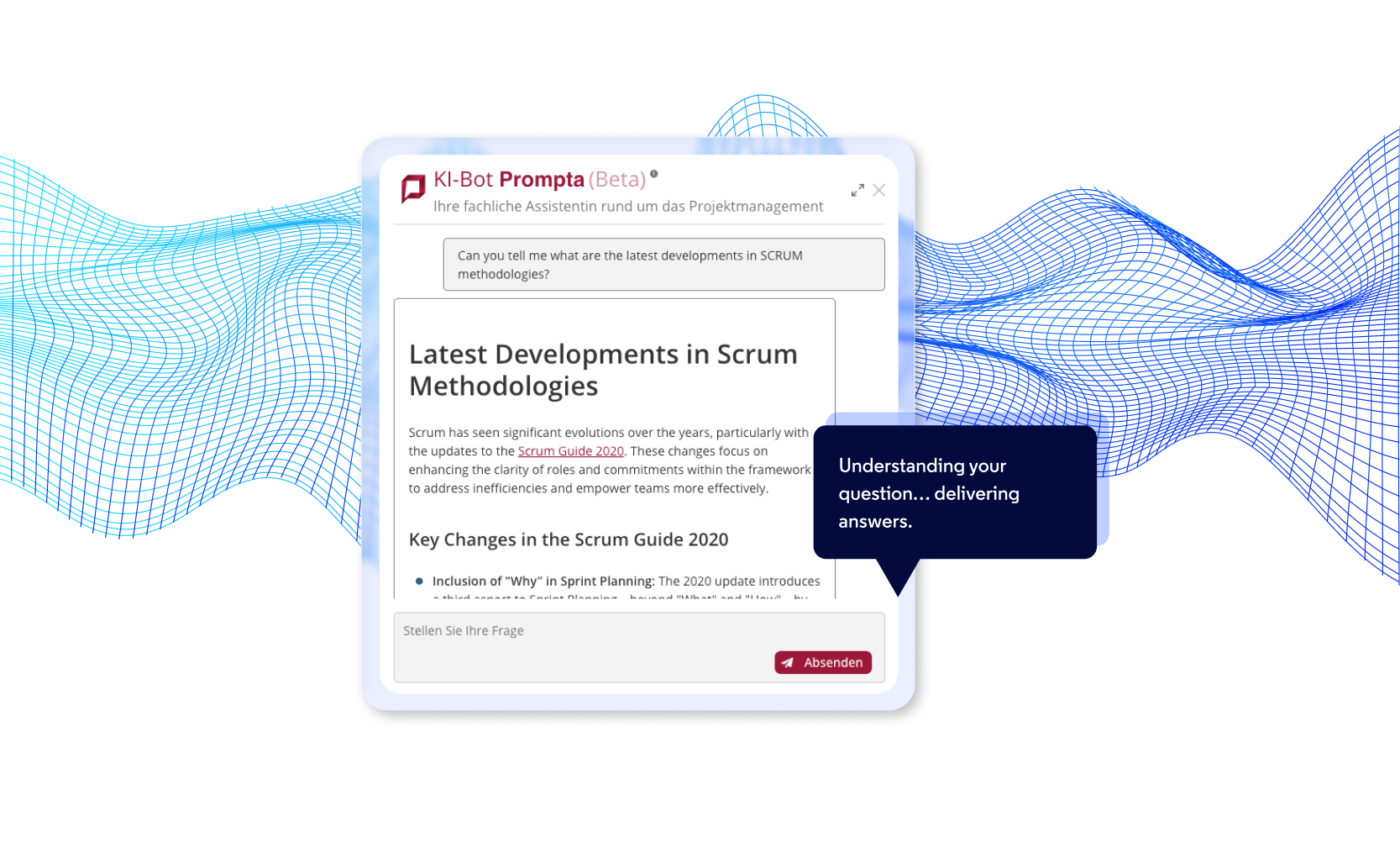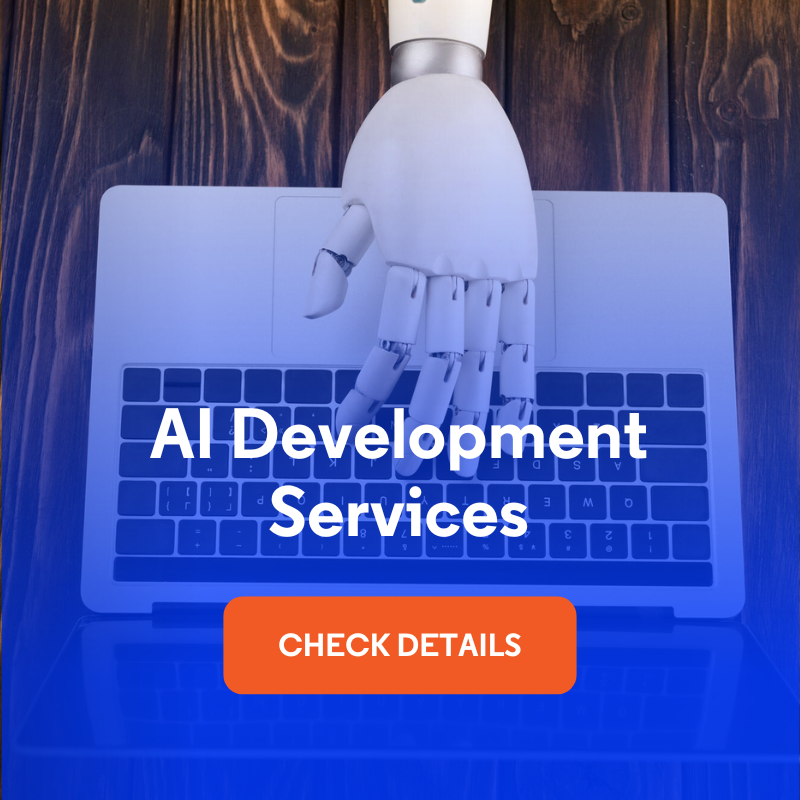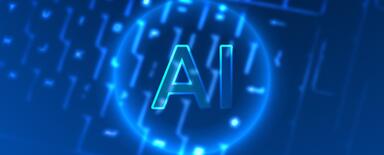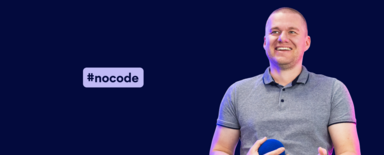
How to Speed Up AI Chatbot Responses with Intelligent Caching
It starts like this: a user types, “How do I reset my password?” and waits… 25 seconds… 30 seconds… before giving up and emailing support. Behind the scenes, your AI chatbot does have the right answer — but it’s too slow, too costly, and users are walking away. The latest API bill? $5,000, mostly for answering the same dozen questions again and again.
This is the hidden cost of naive RAG implementations: every query triggers the full retrieval-augmented generation pipeline, regardless of whether the system answered the identical question five minutes ago. Vector searches, document grading, LLM generation – all repeated for queries that could be served from cache in milliseconds.
Our team experienced this problem firsthand in an AI chatbot deployment. Users loved the answer quality but complained about response times. Our analytics revealed that roughly 30% of queries were variations of the same common questions. By implementing an intelligent caching strategy, we reduced response time from 25 seconds to under 100 milliseconds for cached queries while slashing costs by 95% for those requests.
In this article, I'll show you how to implement intelligent caching for your RAG chatbot, explain when and what to cache, share production-tested code examples, and help you achieve similar performance gains.
In this article:
- Why are RAG chatbots so slow to deliver responses?
- What actually makes caching “intelligent“?
- What’s the three-tier caching strategy for chatbots?
- What business results can you expect from intelligent caching?
- When caching makes sense (and when it doesn't)
- What advanced optimization strategies can further improve caching performance?
- How to start implementing intelligent caching for faster chatbot responses?
- Is intelligent caching worth it for faster, more reliable chatbot responses? Conclusion
- Want to optimize your AI chatbot responses?
Why are RAG chatbots so slow to deliver responses?
Retrieval-Augmented Generation has revolutionized how AI chatbots provide accurate, grounded answers. Instead of relying solely on model training, RAG systems retrieve relevant documents in real-time and use them as context for generation. This architecture delivers remarkable accuracy but comes with inherent performance challenges.
How to understand RAG latency
A typical RAG pipeline involves multiple sequential steps, each adding latency:
- Query embedding (~500ms): converts the user’s question into a vector representation.
- Vector search (~1-2s): searches database for semantically similar documents.
- Document grading (~3-5s): the LLM evaluates the relevance of each candidate document.
- Context preparation (~500ms): assembles the selected documents into a prompt.
- Answer generation (~15-20s): LLM generates a response based on retrieved context.
Total time: 25-30 seconds for a single query. For users accustomed to instant Google searches and ChatGPT's streaming responses, this feels unbearably slow.
The repetitive query problem
Most teams overlook one critical fact: around 20–30% of chatbot questions are repeats. Users rarely come up with something new, they just phrase the same requests in different ways:
- "How do I cancel my subscription?"
- "How to cancel membership?"
- "Cancel my account"
- "Unsubscribe from service"
All four queries seek the same answer. Yet without caching, each triggers the full 25-second pipeline. If 100 users ask these variations over a week, you've spent $5 on API calls and 42 minutes of cumulative wait time for identical information.
What’s the real cost of skipping caching?
Let's calculate the actual impact. Assume a moderate-traffic chatbot:
- 10,000 queries per month.
- 30% are repetitive (3,000 queries).
- $0.05 per full RAG query (embeddings + search + grading + generation).
- 25 seconds average response time.
Without caching:
- Cost: 3,000 × $0.05 = $150/month wasted on repeated questions.
- User time: 3,000 × 25s = 20.8 hours of cumulative waiting.
- Poor UX: users abandon chat, email support instead, defeating chatbot purpose.
With intelligent caching:
- Cost: 3,000 × $0 = $0 (cache hits cost nothing).
- Response time: <100ms (250x faster).
- Better UX: users get instant answers, trust the system, use it more.
The business case writes itself. Now let's explore how to implement it correctly.
What actually makes caching “intelligent“?
Simple key-value caching — for example, storing “How do I reset password?” → “Visit Settings → Account → Reset” — works only for exact matches.
Real users, however, are messy. They make typos, use different phrasing, add extra words, and mix capitalization. Intelligent caching handles all these variations while avoiding common pitfalls.
How does query normalization improve cache accuracy?
The foundation of intelligent caching is query normalization – transforming varied inputs into consistent cache keys. Consider these user queries:
- "How do I cancel my subscription?"
- "HOW DO I CANCEL MY SUBSCRIPTION?"
- "How do I cancel my subscription ?"
Simple caching treats these as three different questions, requiring three separate RAG executions and three cache entries. Intelligent caching normalizes them to a single canonical form:
Original: "HOW DO I CANCEL MY SUBSCRIPTION?"
Normalized: "how do i cancel my subscription"
Cache key: question_5d8aa58f2a8d5e3e2f3b4c5d6e7f8a9b
Normalization typically includes:
- converting to lowercase,
- trimming leading/trailing whitespace,
- collapsing multiple spaces to single spaces,
- optionally removing punctuation (context-dependent).

An example of a project in which we used intelligent caching to speed up chatbot response times
Read our full case study: AI Document Chatbot →
Which queries should you cache and which shouldn’t you?
Not all queries should be cached. Intelligent caching applies rules to determine what merits caching.
Cache these:
- frequently asked questions with stable answers,
- definitional queries ("What is X?"),
- how-to questions with step-by-step answers,
- navigation help ("Where do I find...?"),
- gratitude phrases ("Thank you", "Thanks").
Don't cache these:
- user-specific queries ("What's my account balance?"),
- time-sensitive information ("What time is it?", "Current price?"),
- personalized recommendations based on user history,
- low-confidence answers (might be wrong, don't spread errors),
- rarely-asked unique questions (cache pollution).
Time-to-Live (TTL) management
Cached data becomes stale. Intelligent caching uses TTL to balance performance with freshness:
- Stable FAQs: 1-2 weeks (policies, procedures rarely change).
- Product information: 24-48 hours (features, prices might update).
- Dynamic content: 1-4 hours (news, events, availability).
- User-specific data: Don't cache (always fetch fresh).
Setting appropriate TTL requires understanding your content update frequency and tolerance for stale information.
What’s the three-tier caching strategy for chatbots?
Our production implementation uses a three-tier approach, each tier targeting different query patterns with varying cache lifetimes and matching logic.
Tier 1: Default questions
Every knowledge base has 3-5 fundamental questions users ask immediately: "What is this?", "How does this work?", "What can you do?". These questions are predictable, stable, and asked by every new user.
Implementation approach:
- Pre-define exact question text.
- Cache responses permanently or with long TTL (30 days).
- Serve instantly on exact match after normalization.
- Manually craft high-quality responses.
Tier 2: Gratitude and small talk
Chatbots frequently receive conversational or polite messages that don’t require a full RAG pipeline — phrases like “Thank you”, “Thanks a lot”, or “Good morning.” Instead of processing them through embeddings and retrieval, these responses can be instantly served from cache.
Implementation approach:
- Predefine common small-talk and gratitude phrases.
- Store simple, friendly canned replies (“You’re welcome!”, “Glad I could help!”).
- Use a very long TTL or permanent cache for these entries.
Tier 3: Keyword-based caching
The most powerful tier: identify common action keywords and cache responses for queries containing them. This catches phrasing variations while maintaining accuracy.
Implementation approach:
- Analyze query logs for frequent action keywords.
- Define keyword → cache decision rules.
- Cache responses with moderate TTL (7-14 days).
- Monitor false positive rate.
Read also: How We Improved RAG Chatbot Accuracy by 40% with Document Grading→
What business results can you expect from intelligent caching?
Implementing intelligent caching transformed the performance profile of our production RAG chatbot. The improvements were immediate and substantial across every metric we tracked.
Performance gains
The speed improvement is dramatic. Cached queries return in 50-100 milliseconds compared to 25-30 seconds for full RAG pipeline execution. This represents a 250-300x speedup that fundamentally changes the user experience. Users accustomed to frustrating wait times now receive instant answers. The difference is visceral – what felt like a slow research tool became a responsive assistant.
Our monitoring revealed interesting patterns in cache hit rates. During initial deployment, the hit rate was approximately 15% as the cache gradually warmed with popular questions. Within two weeks, it stabilized at 28-32% of all queries – meaning nearly one in three users received instant responses. For high-traffic systems, this proportion grows even higher as common questions are asked repeatedly.
Cost reduction
The financial impact is equally compelling. Every cached query costs $0 in API fees compared to approximately $0.01-$0.05 for full RAG execution (embedding generation, vector search, document grading, and answer generation combined). With our monthly query volume:
- 10,000 total queries at baseline
- 30% cache hit rate = 3,000 cached queries
- Savings: 3,000 × $0.05 = $150/month
For higher-volume deployments serving 100,000 queries monthly, the savings scale proportionally to $1,500/month or $18,000/year. These savings come with zero degradation in answer quality since cached responses are identical to RAG-generated ones.
Infrastructure benefits
Beyond direct API costs, caching reduces load on your entire infrastructure stack. Vector databases handle 30% fewer searches. Your LLM provider's rate limits affect you less. Server CPU and memory usage decreases. For cloud-hosted deployments, this translates to lower compute costs and better resource utilization.
User experience transformation
The qualitative improvements matter most. User satisfaction metrics showed measurable gains:
- Session lengths increased as users asked more questions instead of giving up.
- Bounce rates on initial queries dropped.
- Support ticket volume decreased for questions the chatbot could answer.
Most tellingly, users began recommending the chatbot to colleagues – organic adoption that wouldn't happen with a slow system.
When caching makes sense (and when it doesn't)
Intelligent caching isn't universally applicable. Understanding when it helps and when it harms ensures you invest effort appropriately.
Ideal use cases for caching
Caching delivers the greatest impact when query patterns repeat frequently and content remains stable over time.
High-volume knowledge bases with thousands of monthly queries see the best ROI. The more queries you handle, the more repetition occurs, and the more caching saves. A chatbot answering 100 queries daily will have different economics than one handling 10,000.
FAQ pages or applications where users repeatedly ask similar questions are perfect candidates. Customer support, product documentation, internal knowledge management, educational resources – these domains naturally generate repetitive queries that benefit immensely from caching.
Stable knowledge bases with infrequent content updates maximize cache effectiveness. If your documentation changes monthly rather than hourly, cached answers remain accurate longer. Annual reports, policy documents, historical information, and established procedures rarely need cache invalidation.
Cost-sensitive deployments where API fees constrain usage benefit immediately. Startups, non-profits, educational projects, and other budget-conscious implementations can achieve professional performance on limited budgets through strategic caching.
When to avoid or limit caching
In some contexts, caching can introduce more problems than it solves, especially when freshness, personalization, or compliance are critical.
Real-time data systems providing stock prices, availability, weather, or other rapidly-changing information shouldn't cache responses. The risk of serving stale data outweighs caching benefits. Users expect current information; cached data from five minutes ago can be misleading or wrong.
Highly personalized systems generating recommendations, user-specific summaries, or customized advice based on individual history can't benefit from shared caching. Each user's query requires unique context, making cache hits impossible.
Compliance-sensitive applications in legal, medical, or financial domains may face regulatory constraints. If audit trails require proof that answers derive from current source documents, caching complicates compliance. Similarly, GDPR and privacy regulations might restrict storing user queries, even transiently.
Dynamic knowledge bases with continuous content updates struggle with cache invalidation. News sites, social platforms, real-time analytics dashboards, and similar applications change too frequently for effective caching. The overhead of constant invalidation can exceed caching benefits.
Special considerations for different query types
Not every type of user question behaves the same way in a cache. Some lend themselves perfectly, others can quickly cause errors or confusion.
- Definitional queries ("What is X?") are excellent cache candidates. Definitions rarely change, and phrasing variations still seek the same answer.
- How-to questions ("How do I Y?") work well if procedures are stable. Caching step-by-step instructions saves significant costs while maintaining quality.
- Troubleshooting queries ("Why isn't Z working?") can be cached if the knowledge base includes common failure modes and solutions. However, avoid caching diagnostic questions that depend on the current system state.
- Comparison queries ("X vs Y") are cacheable if comparing stable entities. Product comparisons, methodology differences, and conceptual distinctions remain constant.
- Opinion queries ("Is X good?") should generally avoid caching if opinions might change or depend on context. However, fact-based evaluations can be cached with appropriate TTL.
What advanced optimization strategies can further improve caching performance?
Once basic caching is working, several advanced techniques can further improve performance and hit rates.
Semantic cache matching
Basic caching requires exact text matches after normalization. "How do I cancel?" and "Ways to cancel" won't hit the same cache entry despite seeking identical information. Semantic caching uses embeddings to identify similar queries:
def get_semantic_cache_hit(question: str, threshold: float = 0.95):
"""
Find cached queries with similar semantic meaning.
Trade-off: More computation (embed + search), higher hit rate
"""
# Embed the query
query_embedding = embedding_model.embed(question)
# Search cached embeddings
similar_cached = vector_db.search(
query_embedding,
collection="cached_questions",
limit=1,
threshold=threshold
)
if similar_cached:
cached_key = similar_cached[0]['cache_key']
return cache.get(cached_key)
return None
This approach increases hit rates by 10-15% but adds embedding costs. Use it when the cache hit value justifies the extra computation.
Multi-tier cache architecture
For enterprise deployments, implement multiple cache layers:
- L1 Cache: in-memory (Redis) for ultra-fast access (1-5ms).
- L2 Cache: database for persistence and recovery.
- L3 Cache: distributed cache for multi-server deployments.
Query L1 first, fall back to L2, then RAG. Write-through strategy populates all tiers.
Read also: How to Choose Your RAG Stack →
How to start implementing intelligent caching for faster chatbot responses?
Ready to implement intelligent caching? Here's a practical roadmap.
1: Analysis and planning
Start by understanding your query patterns. Enable logging if you haven't already, capturing every user question for at least one week. Analyze the logs:
- Identify repetition: what percentage of queries are duplicates after normalization?
- Find patterns: which questions appear most frequently?
- Estimate savings: frequency × $0.05 per query = monthly savings potential.
- Define cache candidates: select top 20-30 questions for initial caching.
2: Implement basic caching
Build the minimum viable caching layer:
- Normalization function: start simple (lowercase, trim, collapse spaces).
- Cache key generation: MD5 hash of normalized query.
- Cache backend: use existing infrastructure (Redis if available, database otherwise).
- Integration: add cache check before RAG, cache response after.
- Logging: track hit/miss rates, latency improvements.
Deploy to production and monitor. Even basic exact-match caching provides substantial gains.
3: Add intelligence
Enhance caching with smart selection rules:
- Define default questions: pre-cache 3-5 onboarding questions.
- Gratitude handling: pattern matches common "thank you" phrases.
- Keyword detection: identify common action keywords ("cancel", "reset", etc.).
- Cache eligibility: implement should_cache rules (confidence threshold, no personal data, etc.).
4: Optimize and monitor
Refine based on real-world performance:
- Analyze metrics: review hit rates, cost savings, user feedback.
- Tune TTL: adjust based on content update frequency.
- Handle edge cases: fix queries that should/shouldn't cache but do/don't.
- Document patterns: record which query types benefit most from caching.
5: Advanced features
Once core caching is stable, consider advanced optimizations:
- Semantic cache matching for higher hit rates.
- Adaptive TTL based on access patterns.
- Cache warming for popular questions.
- Multi-tier architecture for scale.
Is intelligent caching worth it for faster, more reliable chatbot responses? Conclusion
Intelligent caching is the low-hanging fruit of RAG optimization. With a few hundred lines of code and thoughtful cache selection rules, you can achieve 250x performance improvements and slash costs for repetitive queries. The implementation is straightforward, the benefits are immediate, and the ROI is undeniable.
The key insight is strategic selection – not every query should be cached, but the right queries absolutely should be. Focus on frequent, stable answers where users benefit from instant responses. Start simple with exact-match normalization, then layer in sophistication as your system scales.
For our production deployment, intelligent caching was transformative. Users who once complained about wait times now rely on the chatbot for daily questions. Monthly API costs decreased by 15% overall (30% of queries at 95% cost reduction). Most importantly, the system became something users wanted to use rather than something they tolerated.
If your RAG chatbot struggles with response times or costs for common questions, intelligent caching should be your first optimization. Start with the code examples in this article, measure the impact, and iterate based on your specific query patterns. The combination of immediate performance gains and substantial cost savings makes this one of the highest-ROI improvements you can implement.
Want to optimize your AI chatbot responses?
This blog post is based on our real production implementation serving thousands of users. You can read the AI document chatbot case study, which includes details on intelligent caching, smart question routing, document grading, and real-time content synchronization.
Interested in optimizing your RAG system with intelligent caching or other advanced strategies? Our team specializes in building production-ready AI applications that combine quality, speed, and cost efficiency. Check out our AI development services to learn more about how we can help you.











